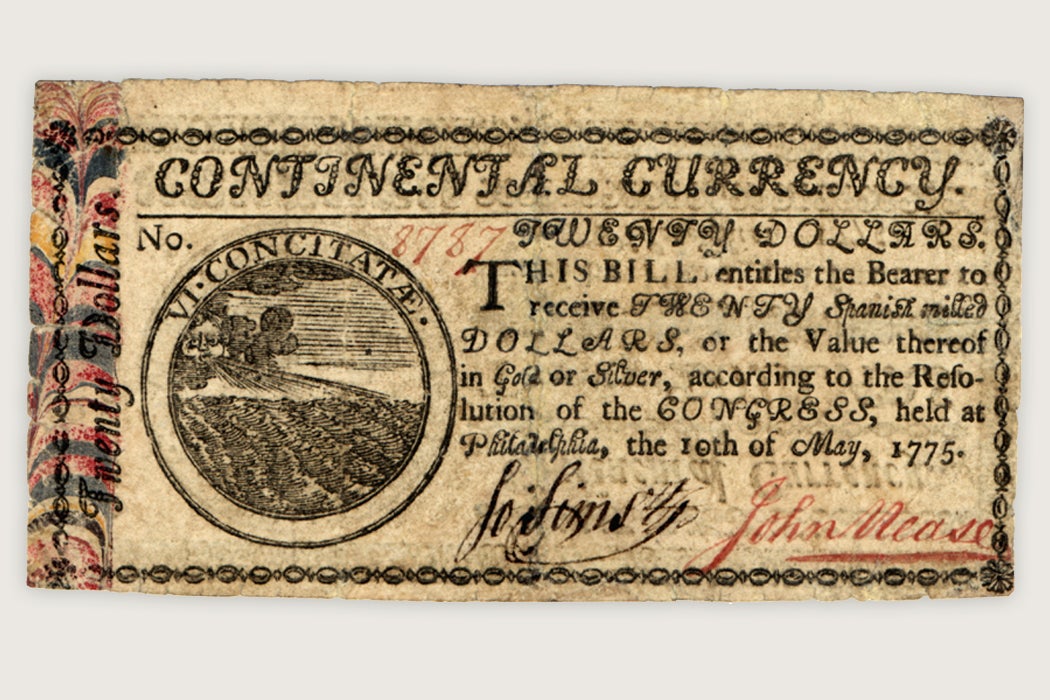As long as people have been printing money, there have been others printing fakes. Even with coinage, there seemed to be no way to stop the coin clippers (those who would trim a small amount of the metal from the edges of coins) and various other metallurgical scams. (When Isaac Newton was in charge of England’s Royal Mint, one of his major efforts was to crack down on counterfeiting).
But money of precious metal, at least theoretically, had the value of the gold or silver of which it was made. Paper money was only the promise of value, so people had reason to be more skeptical of early banknotes. Creating a reliable cash currency has meant fighting against counterfeiters. Serial numbers, sophisticated plate engraving, special paper: central banks have used all kinds of techniques to create authentic banknotes that can be distinguished from fakes. One eighteenth-century option was marbling.
Marbling, the printing of a marble-like pattern on paper by floating dyes on a water bath, was a technique that had been developed in Persia and India before spreading throughout the Ottoman Empire. When it made its way to Europe, it appealed to both artists and London’s world of financiers, who used it on banknotes and bonds. As historian Jake Benson describes, the idea caught on fairly fast:
Within roughly a century of circa 1600, when Persian artist Muhammad Tahir developed his innovative marbling methods and produced his ubiquitous, intricately combed patterns in India, they were applied as the first polychrome security device on some of the earliest indented paper banknotes issued by the Bank of England in 1695.
Difficult to replicate, marbling was a way to make banknotes and checks unique. When the United States was trying to create its first currency, Benjamin Franklin brought to the table the idea of marbling as a security technique, based on his experiences with “conspicuously colored and indented English financial instruments” in London. Subsequently, Franklin “cleverly utilized security marbled wove papers to safeguard early American paper currency, as well as his own personal checks,” writes Benson. More significantly, he also used the technique to safeguard “French promissory notes that financed the Revolutionary War.”
Those promissory notes—exchanged for hundreds of thousands of French livres—were critical for an aspiring republic that struggled to feed and clothe its army.
As Benson writes, it was the creativity of Tahir, a Persian Muslim émigré to India, that “secure[d] the vulnerable fledgling fractional reserve economies of both England and the United States during critical junctures [and] … safeguard[ed] the latter’s independence.” Forwarding the revolution without the support of French military officers like the Marquis de Lafayette would have been difficult. Without French gold? Near impossible.
In the end, it was a Persian papermaking technique that helped bolster America’s economy, and perhaps even determine the nation’s destiny. Even Benjamin Franklin probably wouldn’t have predicted that.







